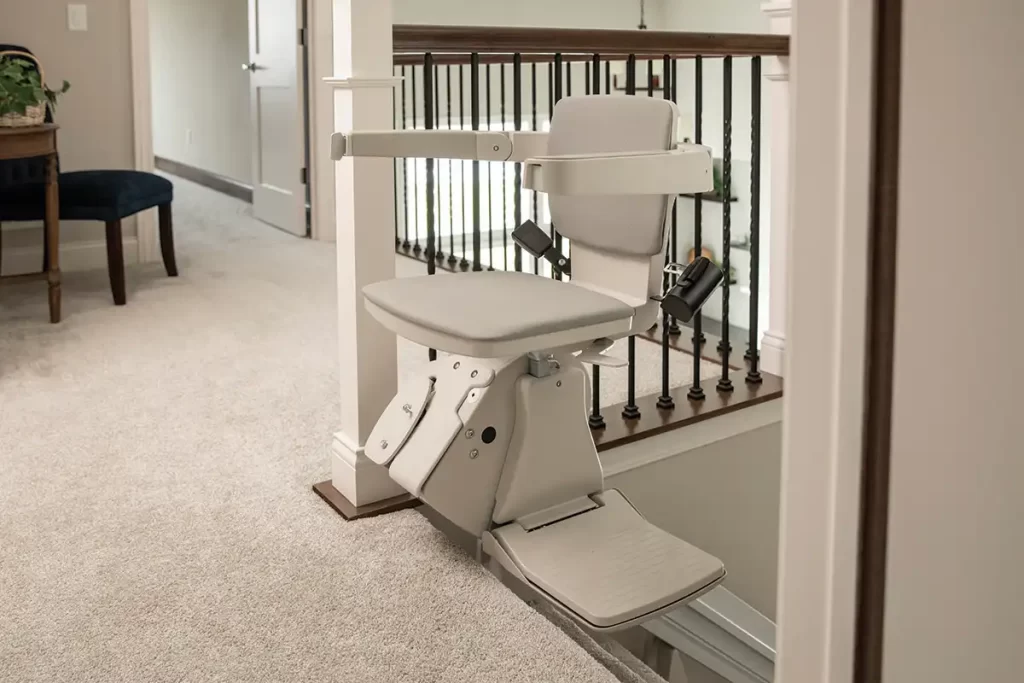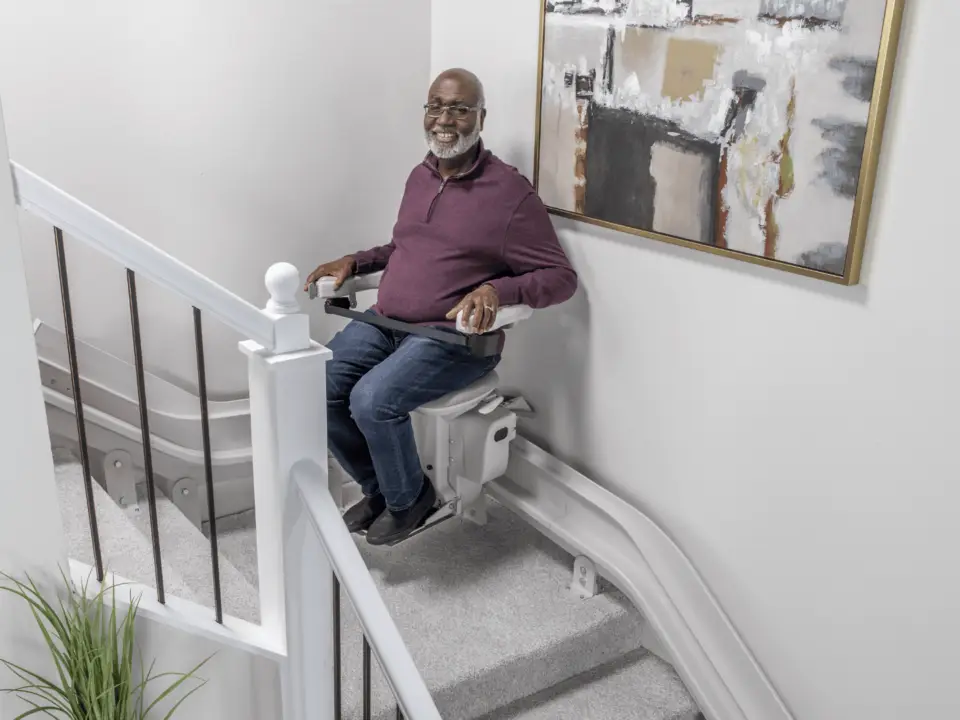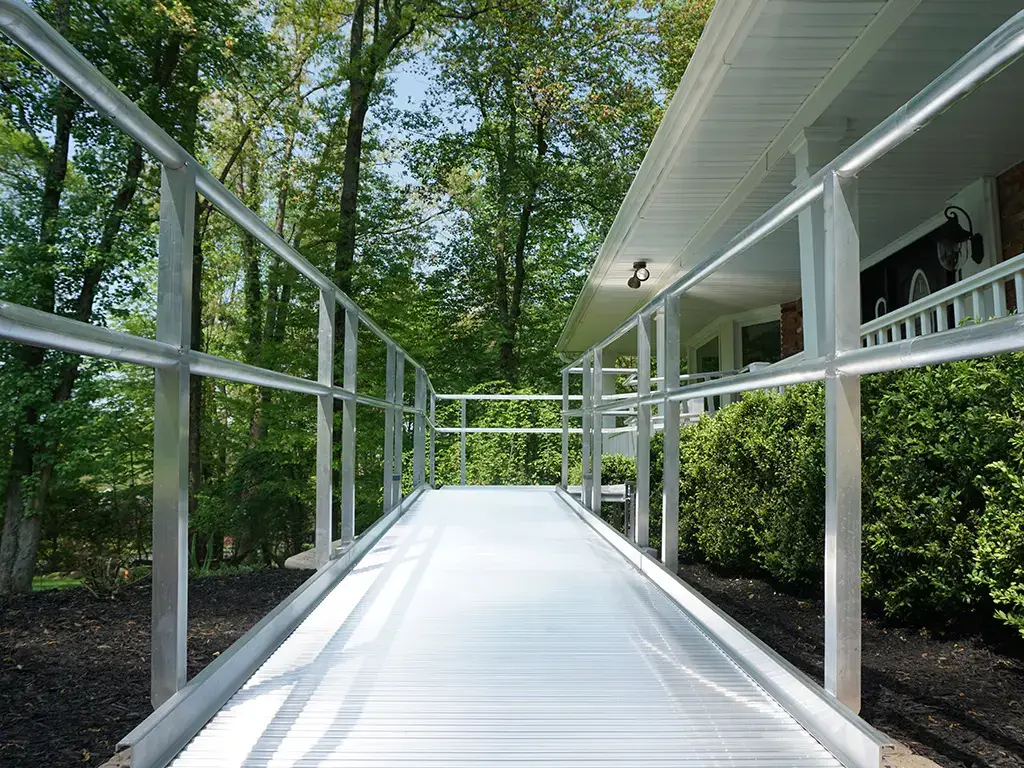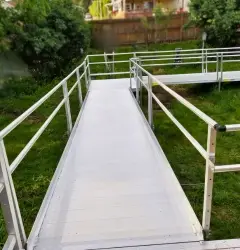For anyone who has experienced a disability or other issues impairing mobility, regaining independence and mobility is a key to attaining a lifestyle one can enjoy.
Today, technology has improved to the point that there is a broad range of mobility aids available, far beyond just the traditional walkers and wheelchairs. At Altamira, we’re proud to offer several different American-made mobility solutions. Before we get into what they are, though, we want to offer a guide that covers mobility aids in general and considerations to make before getting one.
What Are Mobility Aids?
Any device that assists a person with mobility so they can complete everyday tasks is a mobility aid. The various types conform to specific needs and abilities. Some may be temporary, such as crutches used when somebody is recovering from a broken leg. Others, like wheelchairs, provide permanent assistance.
Following are some examples of mobility aids:
-
- ADA modifications
-
- Canes
-
- Crutches
-
- Knee scooters
-
- Lifting seats
-
- Ramps
-
- Rollators
-
- Transport chairs
-
- Walkers
-
- Wheelchairs
Things To Consider Before You Buy a Mobility Aid
Mobility aids provide different levels of support and assistance. Therefore, it’s critical to select the right one for the individual person. This comes down to factors such as mobility levels, existing conditions, and others.
Following are some specific things to look at.
Mobility Requirements and Individual Needs: Is the person able to walk? If so, how well and for how long?
Also, how is the person’s balance? How likely is she or he to fall?
What level of upper-body strength does the person have? If it were necessary for the person to lift the mobility aid, how easy would that be to do? Would it be possible at all?
What kind of physical capabilities and limitations exist?
Strength, coordination, range of motion, and endurance all factor into deciding what type of mobility aid is the proper one. Someone who is unable to walk or who faces a significant risk of falling is not going to benefit from a walking cane. In fact, that could put the person at great risk of serious harm.
Rollators provide support on both sides, unlike a walking cane, but walkers require less balance since they are sturdier, less movable, and more controllable. Therefore, someone who can walk but has serious balance challenges might need a walker instead of a rollator.
Environmental Factors:
For outdoor travel, take stock of what terrain the person will have to travel. For example, someone who will have to move across undulating or uneven terrain may need a motorized wheelchair or scooter.
For indoor movement, you have to consider not just the home but also other indoor spaces such as offices and grocery stores that you’ll be using. Consider doors, stairs, tight spaces, and obstacles that you’ll have to negotiate so that you can determine which aids will work best for your environmental factors.
Portability and Transportation:
Unless the person needing mobility assistance will always be at home, transportation of the mobility aid will sometimes be necessary, so its portability must be assessed. This includes considering the means by which transportation will occur.
How heavy is the device? Can it be folded? Will it fit into the vehicle available for transportation?
In some cases, having two different mobility aids is a great solution because the heavier-duty one can be for home use while the more portable one can be dedicated for travel situations. If the problem is that the transport mode cannot easily accommodate the mobility aid (or if it cannot accommodate it at all), the best solution might be to buy a larger vehicle or one that more easily accommodates the aid.
Dimensions and Weight Capacity:
Always make sure that the mobility aid can support the person’s body weight and that it fits that person’s body shape and dimensions.
Adjustability and Ease of Use:
What kinds of accessibility features does the user need? These can include adjustable seat heights and armrests, removable footrests, storage options, and more. Such features improve comfort and can help the device be more adaptable to different situations.
Once you know what features are needed, look for a mobility aid that offers them and then narrow down based on how accessible and easy to use they are.
Cost:
In an ideal world, the perfect mobility aid would be available to every person regardless of cost. In the real world, though, cost is always a key factor. Someone who needs a wheelchair needs a wheelchair, and a walker is not a practical alternative even though it costs less. However, that person may have to opt for a less expensive model that has fewer features but still meets the person’s needs reliably, adequately, and safely.
So things like Medicare benefits, private insurance coverage, and the monthly budget all have to be considered. Don’t forget to also account for any ongoing costs such as maintenance that may be required.
Which Mobility Aid Is Right for You?
Walking canes are perhaps the simplest of all mobility aids. They’re useful in the following situations:
-
- The person has arthritis or is recovering from a stroke.
-
- A disability or injury affects just one side of the body.
-
- There are only minor balance or stability issues.
The following conditions might call for crutches:
-
- The person is recovering from surgery.
-
- The person is recovering from an injury that requires keeping weight off one side of the body.
-
- The person is undergoing physical therapy as part of the process of recovering from an injury.
Knee scooters keep weight off one foot or leg while providing superior mobility, comfort, and support compared to crutches. In addition to applying to any of the conditions above, they’re also good for the following:
-
- People recovering from foot or ankle surgery.
-
- Someone lacking the upper-body strength to use crutches.
A step up from knee scooters in support is a walker. They reduce the chance of falling by supporting both sides of the body and providing more stability. Why you might need one:
-
- You need assistance standing.
-
- You lack the strength to pick up and/or carry the device.
-
- You are at high risk of falling or have significant balance issues.
-
- Your recovery from surgery requires full-body support.
Rollators have the same benefits of walkers plus the following:
-
- They’re easier to push and don’t require lifting.
-
- They work on various terrain types.
-
- They provide a place to sit and rest for those who tire quickly.
Lifting seats help people stand or sit. They also make it easier for caregivers to perform patient transfers.
Wheelchairs support the entire body and can be motorized for easier use, especially on uneven terrain. It isn’t just people without the ability to walk who benefit from wheelchairs. So do the following:
-
- People recovering from broken bones in the leg.
-
- Someone who can walk but has a great deal of trouble with it and is at high risk of a fall.
-
- Anyone who has balance or gait issues and neurological issues as well.
Transport chairs are similar to wheelchairs, but they’re designed for temporary use because they’re more flexible and portable, which makes them good as a mobility aid when traveling. They don’t allow self-movement, so there must be someone who can push it.
Mobility Aids Offered by Altamira
We are proud to offer the following 6 products:
Stairlifts: Stairs are one of the greatest mobility challenges there are, and it’s often not practical or even possible to move to a new home that doesn’t have stairs. We can install stairlifts for straight staircases, curved ones, and the outdoors. This includes for staircases with multiple landings, and in the outdoors, the stairlifts are built to withstand the elements.
Wheelchair Lifts: In cases where a stairlift won’t work or the user doesn’t want one but still needs a way to get from one level to another, wheelchair lifts provide an economical solution. Similar to elevators in concept, they can raise and lower a wheelchair or scooter between floors of a home or office. They’re also good for short steps and challenging entryways where a stairlift might be overkill.
Scooter Lifts: This may be a must if travel is involved. A scooter lift can raise a scooter, wheelchair, or transport chair into or onto a vehicle and then back down again.
Ramps: Homes and offices can have smaller obstacles that don’t really need stairlifts or wheelchair lifts (or can’t accommodate them). Ramps of different varieties, including portable and outdoor ones, can solve this problem.
Patient Lifts: Many people with mobility issues need assistance getting from beds, chairs, and toilets into their wheelchairs. Motorized patient lifts and slings prevent falls and also protect caregivers from injuries associated with moving patients.
ADA Modifications: We can install ADA-compliant showers and other bathroom products that remove usage barriers for people with mobility challenges. Walk-in tubs and bars for toilets, sinks, and showers make using these facilities so much easier.
At Altamira, we understand the importance of mobility and independence for self-esteem, self-confidence, and quality of life. Visit our site or call us today to see how we can help!






